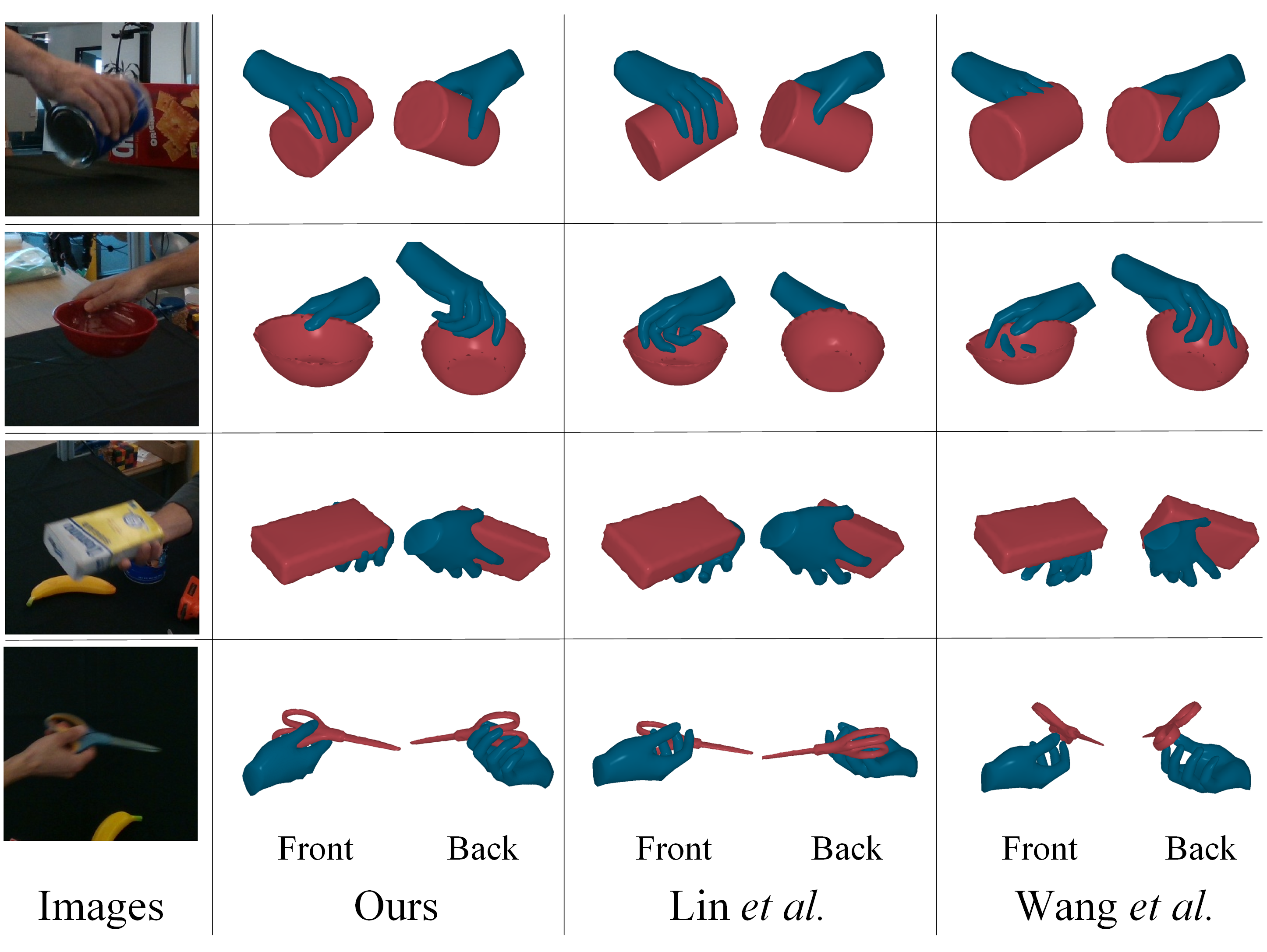DexYCB dataset

Human hands are highly articulated and versatile at handling objects. Jointly estimating the 3D poses of a hand and the object it manipulates from a monocular camera is challenging due to frequent occlusions. Thus, existing methods often rely on intermediate 3D shape representations to increase performance. These representations are typically explicit, such as 3D point clouds or meshes, and thus provide information in the direct surroundings of the intermediate hand pose estimate. To address this, we introduce HOISDF, a Signed Distance Field (SDF) guided hand-object pose estimation network, which jointly exploits hand and object SDFs to provide a global, implicit representation over the complete reconstruction volume. Specifically, the role of the SDFs is threefold: equip the visual encoder with implicit shape information, help to encode hand-object interactions, and guide the hand and object pose regression via SDF-based sampling and by augmenting the feature representations. We show that HOISDF achieves state-of-the-art results on hand-object pose estimation benchmarks (DexYCB and HO3Dv2).
Our model utilizes Signed Distance Fields (SDF) to provide global and dense constraints for hand-object pose estimation. In contrast to direct lifting and coarse-to-fine methods, which struggle to refine poor initial predictions, the distance field yields global cues not limited to areas near an initial prediction.

HOISDF has two parts: A global signed distance field learning module and a field-guided pose regression module. The global signed distance field learning module regresses the hand object signed distances as the intermediate representation and encodes the 3D shape information into the image backbone through implicit field learning. The field-guided pose regression module uses global field information to filter and augment the point features as well as guiding hand-object interaction. Those enhanced point features are then sent to regress hand and object poses using point-wise attention.

The darkness of the query points reflects the predicted distance from the query point to the hand (in blue) and object (in green) surfaces. The intermediate SDF representations can capture the GT 3D hand and object shapes. HOISDF effectively uses the robust global clues from SDFs to deal well with various objects and hand movements as well as their mutual occlusions.

We achieve state-of-the-art results on the DexYCB and HO3Dv2 datasets, corroborating the benefits of using SDFs as global constraints for hand-object pose estimation and the effectiveness of our approach to exploiting the field information.





@misc{qi2024hoisdf,
title={HOISDF: Constraining 3D Hand-Object Pose Estimation with Global Signed Distance Fields},
author={Haozhe Qi and Chen Zhao and Mathieu Salzmann and Alexander Mathis},
year={2024},
eprint={2402.17062},
archivePrefix={arXiv},
primaryClass={cs.CV}
}